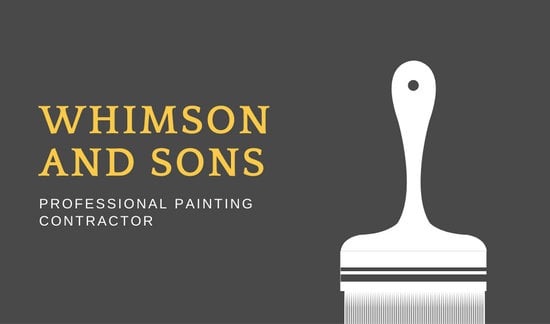Seasonal Factors In Commercial Exterior Painting: Trick Insights You Need To Know
Seasonal Factors In Commercial Exterior Painting: Trick Insights You Need To Know
Blog Article
Short Article By-Carlson Urquhart
When you're intending an industrial exterior painting project, seasonal elements can make or damage your results. You'll intend to consider how temperature and moisture impact paint application and drying out times. Selecting the right period can ensure your paint sticks correctly and lasts longer. But which periods are truly the very best for this sort of work? Let's explore the key elements that can affect your task's success.
The Influence of Temperature Level on Paint Application
When you're intending an industrial outside paint job, the temperature level can considerably impact exactly how well the paint adheres and dries.
Ideally, you wish to repaint when temperatures vary in between 50 ° F and 85 ° F. If it's too chilly, the paint may not treat correctly, leading to problems like peeling or fracturing.
On the other hand, if it's too hot, the paint can dry out also promptly, protecting against appropriate bond and leading to an uneven coating.
You must additionally think about the moment of day; morning or late afternoon provides cooler temperatures, which can be a lot more beneficial.
Constantly examine the maker's referrals for the certain paint you're utilizing, as they often give support on the suitable temperature level array for optimal outcomes.
Moisture and Its Effect on Drying Times
Temperature isn't the only ecological variable that affects your industrial outside paint job; moisture plays a significant duty too. High humidity degrees can decrease drying times substantially, affecting the overall top quality of your paint task.
When the air is saturated with moisture, the paint takes longer to cure, which can lead to concerns like inadequate bond and a greater risk of mold growth. If you're repainting on a specifically moist day, be planned for extended wait times between layers.
It's vital to monitor neighborhood climate condition and plan as necessary. Ideally, aim for moisture levels in between 40% and 70% for optimum drying.
Maintaining visit this weblink in mind ensures your project remains on track and provides a long-term finish.
Best Seasons for Commercial Outside Paint Projects
What's the most effective season for your commercial outside painting projects?
Springtime and early fall are usually your best options. Throughout these seasons, temperature levels are moderate, and humidity degrees are usually lower, developing excellent problems for paint application and drying.
Avoid summertime's intense heat, which can cause paint to completely dry as well swiftly, causing inadequate attachment and surface. Similarly, winter's cool temperature levels can prevent correct drying out and healing, taking the chance of the durability of your paint task.
Go for days with temperatures between 50 ° F and 85 ° F for optimal outcomes. Keep in mind to examine the neighborhood weather prediction for rainfall, as wet conditions can ruin your project.
Preparation around these factors ensures your paint task runs smoothly and lasts much longer.
Verdict
In conclusion, planning your industrial exterior paint jobs around seasonal considerations can make a significant difference in the result. By scheduling job during the excellent temperature levels and humidity degrees, you'll guarantee much better adhesion and drying out times. Keep in paint houses to keep an eye on regional weather prediction and choose the right time of year-- spring and early autumn are your best options. Taking these actions will assist you attain a resilient and expert coating that lasts.
